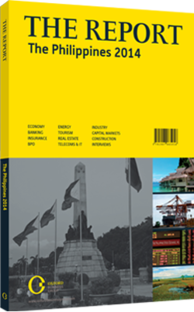Real free trade: Should it pass, the TPP agreement will have a wide-ranging impact
Of all the free trade agreements (FTA) signed and in negotiation, the Trans-Pacific Partnership (TPP) promises to do the most to improve the fortunes of the Philippines. It will not only lift trade numbers, which is vital if the country is going to grow enough to reach its economic targets, but it will also force it to make a number of difficult reforms necessary for the country to move forward in a sustainable way. However, what makes it such a significant pact is what may also make it one of the most difficult to realise. The TPP will meet with resistance, especially from labour groups and corporate interests, and will no doubt face implementation hurdles at the political and bureaucratic levels.
SHORTCOMINGS: The Philippines has signed a number of FTAs and has more in the works. In 1999 it entered the ASEAN FTA (AFTA), which has reduced most tariffs in the region to 0% or 5%; ASEAN itself has concluded a number of FTAs as a bloc, including pacts with Australia, China, India, Korea and New Zealand. The Philippines has one bilateral FTA. The Japan-Philippines Economic Partnership Agreement (JPEPA) went into effect in December 2008 after four years of negotiations. The country is also in discussions to sign an FTA with the EU. The problem with these FTAs is that they have done or will do little to guarantee true free trade. While the existing and several proposed FTAs do much to reduce tariffs and ease the flow of goods between signatories, they leave much untouched. Excessively long “sensitive lists” reduce the effectiveness of the agreements and suggest that they are less exercises in liberalisation and more extended negotiations. Importantly, they do not address many of the issues that lie one or more levels down in the economy that have the potential to limit the effectiveness of tariff reductions and other headline agreements. Despite the FTAs signed, the Philippines has not tackled many of its internal structural deficiencies, and free trade cannot really flourish due to the lack of relevant domestic reform.
A NEW FORCE: The TPP is a different creature altogether. It is more demanding, requiring substantial overhaul of regulation, practice, process and law – even rewriting parts of the constitution – and real enforcement. Intellectual property rights must be protected. Services must be liberalised. Government procurement must be opened, and foreign investment for the most part must not be restricted. To tick all the boxes, the Philippines is going to have to rework itself in profound and fundamental ways. The TPP is not an agreement that can be signed and then used as a platform for compromise and further discussion. It requires a full transformation and a wholesale acceptance of the benefits of real free trade, a commitment that cannot really be reversed. Many FTAs are signed by countries thinking that they will allow them to gain business using traditional mercantilist strategies. The TPP needs to be entered in the belief that the pie gets bigger and everyone wins if unfetter trade is allowed. DO OR DON’T?: The TPP is so invasive that it will not easily be passed. Labour does not like it; the environmental lobby is against it. Many corporations are resisting, and paring down the negative list might be a big challenge for even the most liberal of bureaucrats. The Philippines is one of the more restrictive economies in Asia, and getting anywhere close to TPP-acceptable levels of openness will require painful and unpopular measures almost impossible for politicians to push through. At the same time, China is working to keep South-east Asia from following a Washington-led programme calling for such high levels of liberalisation. A battle of influence and ideology is brewing.
What will ultimately drive the TPP to acceptance is competition. In the region, Singapore, Malaysia, Vietnam and Brunei are already negotiating to join the partnership. The fact is, countries that enter the TPP will likely gain quick benefits from more open trade and investment flows with not only the US, but also other advanced countries, like Australia and Japan, and regional partners. While costs will be incurred and some hardships experienced, remaining outside the grouping may in the end be more expensive than entering it.
You have reached the limit of premium articles you can view for free.
Choose from the options below to purchase print or digital editions of our Reports. You can also purchase a website subscription giving you unlimited access to all of our Reports online for 12 months.
If you have already purchased this Report or have a website subscription, please login to continue.

